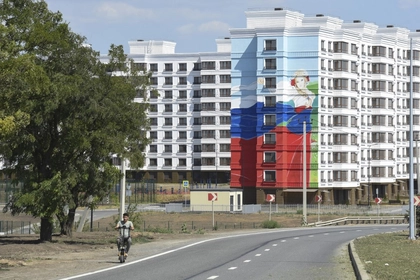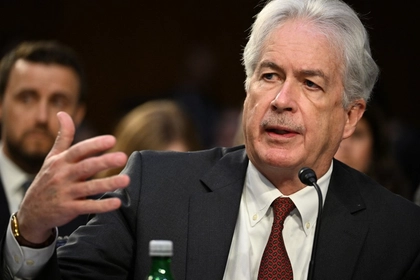An innovate Copenhagen-run arms assistance initiative has tripled Ukrainian production of a vital howitzer, by tapping into hundreds of millions of Russian Euros sequestered in Danish banks to pay for the artillery pieces, Danish Defense Minister Troels Lund Poulsen said on Sunday.
Delivery of Ukraine’s 2S22 Bohdana howitzer has jumped from six to eighteen systems a month, following purchase and delivery to Ukraine of key components, Poulsen said in comments to Ukrainian media.
JOIN US ON TELEGRAM
Follow our coverage of the war on the @Kyivpost_official.
The Bohdana is a wheeled artillery piece developed by the Armed Forces of Ukraine (AFU) following Russia’s 2014 partial invasion of Ukraine, and one of the first major weapons designed by Ukrainian industry using lessons learned from actual combat against the Russian army.
The heavy weapon is equipped with a NATO-standard 155mm gun and modern fire control electronics that allow it to outrange comparable Russian systems by a considerable margin. As originally designed, the Bohdana was mounted on a truck chassis produced by Ukraine’s KrAZ automotive plant. Production was only six weapons a month following Russia’s 2022 full-scale invasion of Ukraine, because of weak Ukrainian government financing, and manufacturing problems at KrAZ linked both with funding volumes and Russian missile strikes.
Speaking at the Yalta European Strategy Summit in Kyiv, Poulsen said that during March, Danish and Ukrainian officials began to discuss military assistance. The delegations agreed that increased production of Ukraine-manufactured artillery systems – and most importantly the Bohdana – should be a top priority for Danish-led funding.

US Must Address Russian Disinformation to Strengthen US Election Integrity
“That was first deal that Denmark made with the government of Ukraine. That was in fact to reimburse eighteen (Bohdana) artillery systems produced here in Ukraine,” Poulsen said. “[If) you were buying artillery systems in Europe, I think it would take some years to be delivered. In July we placed the order for reimbursement, and this weekend the eighteen Bohdana systems have been delivered to the Ukraine forces. That’s an amazing speed of time.”
The funding framework that purchased the Bohdana howitzers made Denmark the first NATO nation to invest directly in weapons production in Ukraine.
The AFU currently fields what is a maintainer’s nightmare – commonly referred to by Ukrainian gunners as a “zoo” – of some 700 Western-manufactured, 155mm-capable artillery systems. Some are towed guns dating back to the 1970s and the Cold War, and others are modern self-propelled systems.
The AFU has proved skillful at operating even state-of-the-art weapons like Germany’s powerful PzH2000 and Sweden’s rapid-firing Archer howitzers, but intense combat has at times left hundreds of weapons off-line for months, because howitzers needing major maintenance such as replacement of worn barrels or repair of serious battle damage, must often be transported back to the country that manufactured them.
Ukrainian-manufactured Bohdanas will be repaired and maintained inside Ukraine and their cost “is a lot less” than a comparable system produced for a European army, Paulsen said. He said that Danish support to Ukrainian arms manufacturing would increase and that the success with Bohdana production was merely a “first milestone.”
Critical foreign components to the Bohdana include the cannon and gunnery-related electronics. Bohdana models on display at arms expos in 2023 and 2024 have featured a four-axle Czech Tatra T815 8×8 chassis with an armored cabin produced by a Ukrainian company. Ukrainian milbloggers have estimated the probable cost of fielding a single Bohdana to be about €3 million ($3.3 million).
A brand-new PzH2000 howitzer – a system more heavily armored and running on tracks not wheels, unlike the Bohdana, costs around €17 million ($18.9 million) each. The French unarmored wheeled Caesar howitzer, which is more comparable to the Ukrainian weapon, sells for €5-7 million ($5.5-7.5 million).
According to a Sept. 15 article in the Danish newspaper and information platform Nordjyske, parts acquisition combined with assembly in Ukraine of the Bohdana howitzers delivered in July were paid for from a Copenhagen-managed 1.3 billion kroner ($193 million) Fund intended to support Ukraine’s defense industry.
That money is a piece of an almost 3 billion kroner ($447 million) cash pool built from frozen Russian assets held in EU banks. In early 2024 Brussels gave Denmark responsibility for managing the injection of that capital, for the most part accumulated from sequestered interest earned by Russian overseas corporate accounts, into Ukrainian arms manufacturing, figures that a Danish Foreign Ministry statement confirmed.
The NATO co-founder Denmark, one of the few west European states with direct experience of Red Army occupation during World War II, has long been one of Kyiv’s strongest supporters following Russia’s February 2022 invasion of Ukraine. Denmark was the first country to donate F-16 fighter jets seeing combat in Ukraine’s skies and will send more aircraft, but financing modern weapons production in Ukraine by European states is “the way forward” Paulsen said.
The Norwegian online newspaper Nettavisen reported on Sept. 14 that Ukraine has also begun domestic manufacture of 155mm ammunition – an arms production bottleneck probably worse than even artillery pieces. Oleksandr Kamyshin, the newly appointed defense production advisor to Ukrainian President Volodymyr Zelensky, declined to tell Nettavisen how many of the NATO-standard shells were coming off domestic assembly lines under license from the Norwegian arms conglomerate Nammo. Overall, since Russia’s invasion Ukrainian arms production has doubled, and by the end of 2024 it will have tripled, he said.
“The most important thing for Ukraine, is to establish the regular production of [155mm NATO-standard] shells,” Agil Rustamzade, a military weapons expert and former officer of the Armed Forces of Azerbaijan, said.
Kamyshin said that the best way for Norway to support Ukraine’s defense would be to invest in Ukrainian arms production at home, like neighboring Denmark has done.
If you want to learn more about the Bohdana’s development, you can read about it here.
You can also highlight the text and press Ctrl + Enter






